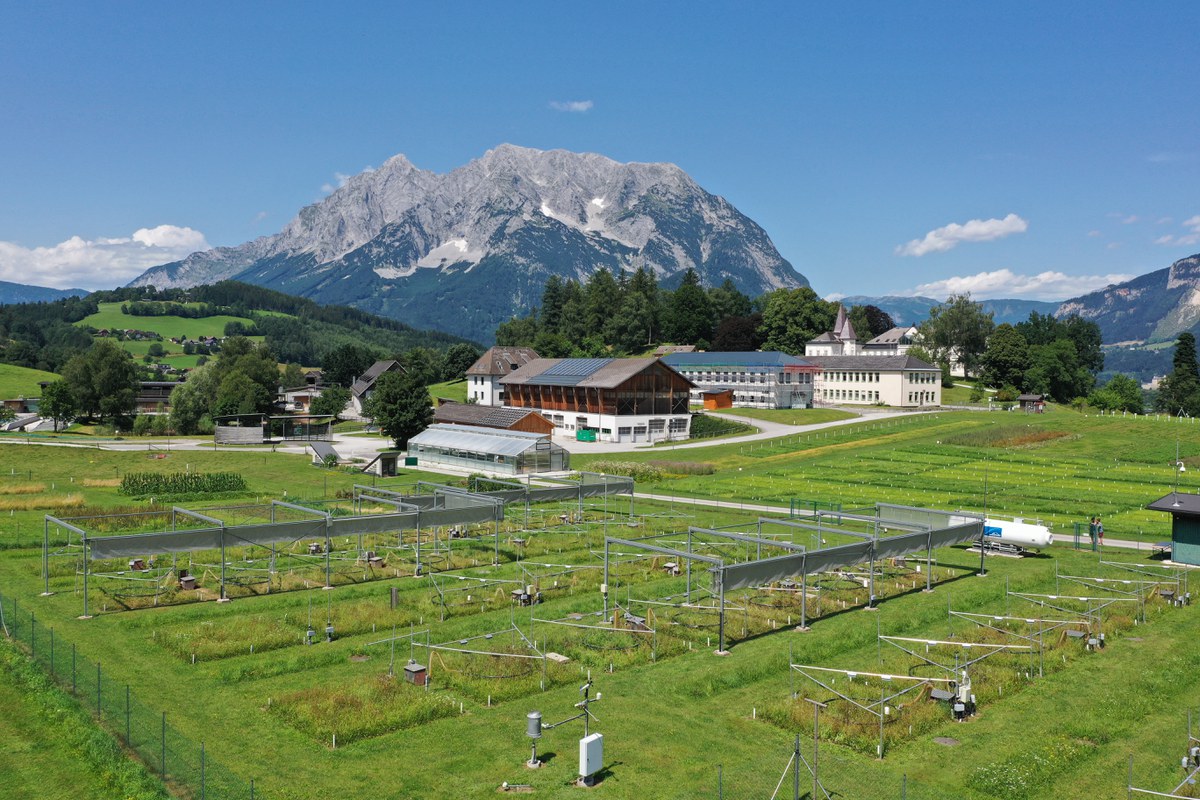What does the future hold for our soils and water availability under the influence of impending climatic changes? An international study led by the University of Innsbruck, with the participation of the Institute of Bio- and Geosciences - Agrosphere at Forschungszentrum Jülich, shows how drought, warming, and increased atmospheric CO2 concentrations alter the hydrological balance in soil and challenge ecosystem resilience. The findings have now been published in the journal Science.

Grasslands cover nearly 40 percent of the Earth's surface and play a crucial role in the global water cycle. However, the effects of climate change on these vital ecosystems remain insufficiently understood. In an experiment ongoing since 2014, researchers simulated the changes expected in future climate scenarios for three central factors-warming, increased atmospheric CO2 concentrations, and drought-and analyzed their long-term impacts. The effects were examined both individually and in various combinations. Using rainwater enriched with stable isotopes (heavier atoms used as tracers), the team was able to analyze in detail the movement and storage of water in soil pores and during evaporation after the drought ended. Prof. Dr. Nicolas Brüggemann of Forschungszentrum Jülich played a key role in optimizing the isotope measurement techniques, conceptualizing, analyzing, and contributing to the publication of the study.
Short-Term Positive Effects
Under elevated CO2 concentrations, the root zone of the plants remains moister because the plants use water more efficiently. This is because, with increased CO2 levels in the air, plants can reduce the degree to which their stomata on the leaf surface open in order to absorb the same amount of CO2. As a side effect, the leaf loses less water and the plant has to absorb less water from the soil, which remains moister. However, simultaneous heat leads to a general loss of moisture in the soil, cancelling out this positive side effect. When repeated droughts occur in a future warmer climate, significant changes in soil properties ensue. In these scenarios, water in the soil mixes less effectively because it primarily flows through large, fast-draining pores where it quickly runs off, rather than penetrating smaller, slower-draining pores. Older water also remains in these smaller pores for longer periods. This impairs the hydrological connectivity of the soil-that is, the connection between larger and smaller soil pores-which is essential for water availability to plants. The researchers emphasize that this limitation of water flow within the soil has far-reaching consequences for the function and resilience of grassland ecosystems. Plants are forced to use water more sparingly, which could limit their growth and regeneration capacity in the long term. At the same time, the study shows that elevated CO2 levels in the atmosphere can have short-term positive effects, such as faster recovery after drought phases. However, these effects are overshadowed by the negative impacts of increasing warming and drought on soil properties.
Soil and Plant Interactions More Complex Than Previously Thought
The study revealed that the interactions between soil and plants may be far more complex than previously assumed. This has significant implications for the ability of ecosystems to withstand and recover from drought periods. The study's findings underscore the urgent need to develop strategies to enhance ecosystem resilience to climate changes and to advance global efforts in climate protection.
Contact Person
Prof. Dr. Nicolas Brüggemann
Head of research group "Plant-Soil-Atmosphere Exchange Processes"
- Institute of Bio- and Geosciences (IBG)
- Agrosphere (IBG-3)









